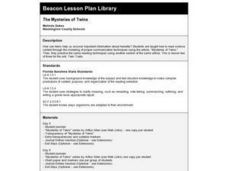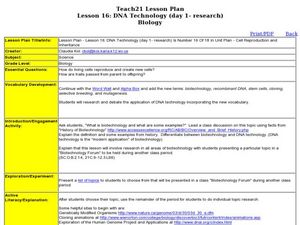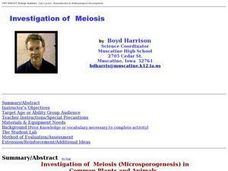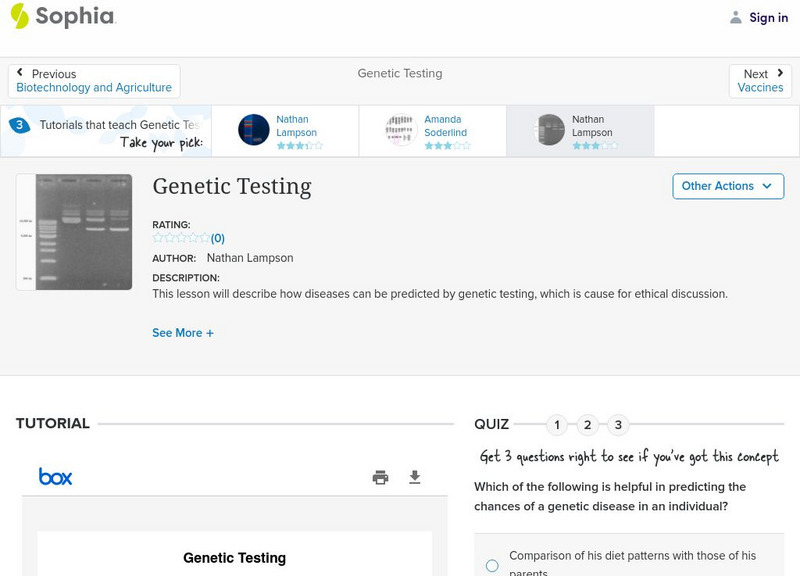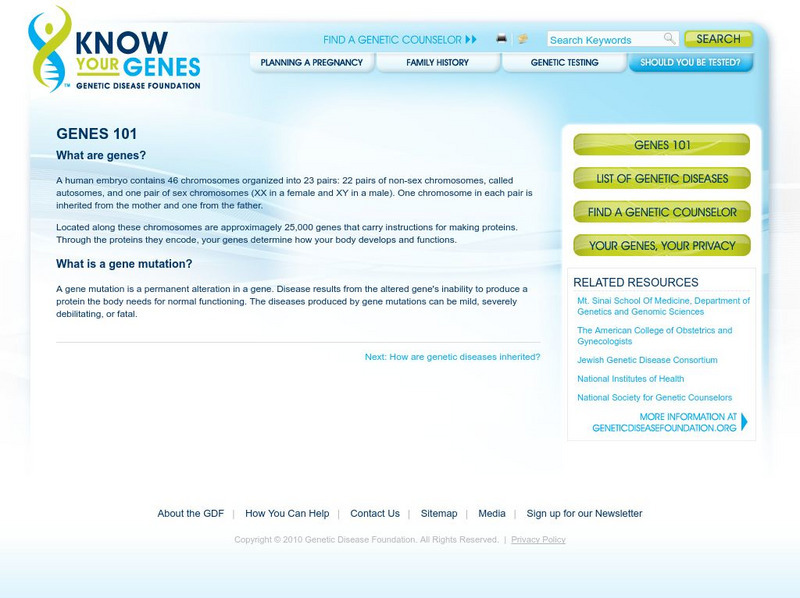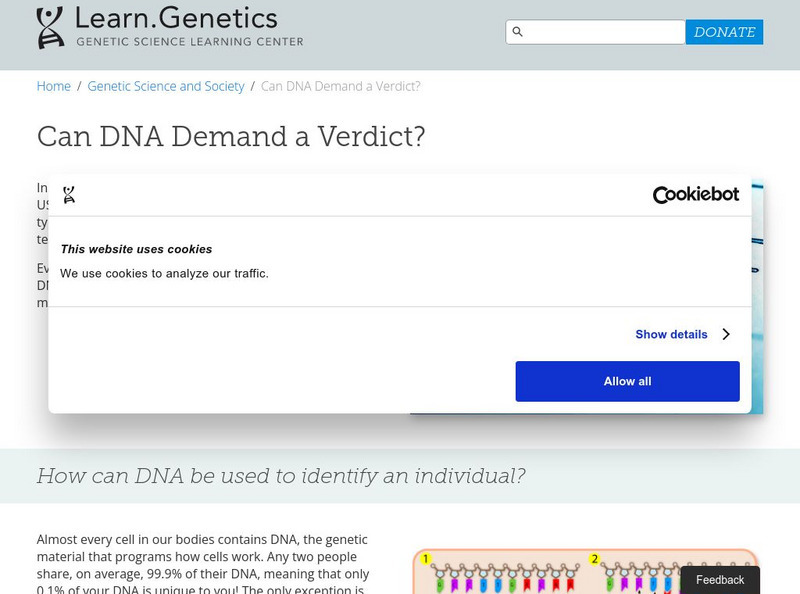Towson University
The Wildlife Forensics Lab
Can science put an end to the poaching of endangered species? Show your young forensic experts how biotechnology can help save wildlife through an exciting electrophoresis lab. Grouped pupils analyze shark DNA to determine if it came...
Curated OER
And the Verdict Is...
Students identify the unique pattern DNA forms in each individual, and how that pattern can be used to identify criminals. They have the opportunity to simulate the process of matching DNA samples to those taken at a crime scene.
National Nanotechnology Infrastructure Network
Help or Hype: The Ethics of Bio-Nanotechnology
Ethical concerns are not always black and white. A well-designed lesson plan presents learners with scenarios for which ethics may come into question. Scholars learn to consider the different sides of a situation and make an...
Curated OER
Alcohol Tolerance in Drosophila and You
Students develop and run a laboratory comparing alcohol tolerance in flies with and without the ADH enzyme.
Curated OER
The Mysteries of Twins
Third graders experience reading in the content areas by reading about heredity and practicing summarizing the reading.
Curated OER
Lesson 16: DNA Technology
Students research different areas of biotechnology. In this biology instructional activity, students create a presentation about their research. They debate the topic presented and share their views on the subject.
Curated OER
Biotechnology Projects and Writing Assignments
Students research a subject about biotechnology and do a project or a writing assignment on it. They can pick from a possible eighteen different projects and five different writing projects.
Curated OER
Human Development: The First Trimester & Developmental Malformations
Students, analyze and discuss cleft lip, cleft palate, anencephaly, spina bifida and septal defects in the heart--well-known malformations that can occur in the first trimester of prenatal devalopment. They play the review game, Fetal...
Curated OER
ABOUT ALL YOU CAN EAT: Superfoods
Students trace back through time to see how the nutritional value of food consumed was enhanced. In this nutrients lesson students complete several activities that show the mass of food, and its PH value.
Curated OER
Investigation of Meiosis in Common Plants and Animals
Students witness various stages of mitosis through preparing onion root tip slides. With teacher guidance, they learn a great deal through the hands-on process of preparing the slides themselves.
Curated OER
Barnacles: Harder than Cement
Fourth graders watch the movements of the complex animal hidden inside the tiny barnacle shells. This lesson allows students to study the behavior, adaptation, and larval stage of the barnacle.
University of Kentucky
University of Kentucky: Genetic Testing
An essay on the uses and types of genetic testing. Very readable. Discusses legal issues, offers several case study examples, and includes a definition.
National Health Museum
Access Excellence: Genetic Testing Health Care Issues
This interview with a health policy expert on the use of and future of genetic testing is from a symposium on DNA at the University of California at San Francisco.
Genome British Columbia
Genome British Columbia: Predictive Genetic Screening
The purpose of predictive genetic screening is to learn whether an individual is at high risk of developing a heredity condition that may run in the family. This article shows you how to weigh the benefits and disadvantages of having...
BiologyWise
Biology Wise: Genetic Testing Cost
Discusses factors that affect the cost of genetic testing and what to think about when considering having it done.
American Institute of Biological Sciences
Action Bioscience: Looking for Ms. Or Mr. Gene Right: Genetic Screening
Before you say, "I do," should you undergo genetic testing to determine if you or your future spouse have any health risks that could be transmitted to children? Address the scientific support for these tests as well as the moral...
Sophia Learning
Sophia: Genetic Testing: Lesson 3
This lesson will describe how diseases can be predicted by genetic testing, which is cause for ethical discussion. It is 3 of 3 in the series titled "Genetic Testing."
Sophia Learning
Sophia: Genetic Testing: Lesson 1
This lesson will describe how diseases can be predicted by genetic testing, which is cause for ethical discussion. It is 1 of 3 in the series titled "Genetic Testing."
Nature Research
Scitable: Genetics and Society
Get an in-depth look at the ethical, legal, and social implications genetic technologies have on society. Explore the ethical considerations that genetics has on our society with the advances in genetically-tailored treatments, genetic...
Other
Genetic Disease Foundation: Know Your Genes
A site dedicated to educating about genetic inheritance. Explore genetic testing and how your family history affects your genetic information.
University of Utah
University of Utah: Genetic Science Learning Center: Dna and Verdicts
Part of a site on genetics, this page explores DNA as a forensic science. Explains how and why DNA can be used to convict or acquit a criminal from wrongdoing using forensic DNA analysis. Teacher resources too.
National Cancer Institute at the National Institutes of Health
National Cancer Institute: Cancer Genetics Overview
This site provides extensive information about the relationship of genetics to cancer.
Cold Spring Harbor Laboratory
Dolan Dna Learning Center: Model Organisms
Learn about model organisms that research scientists use in lab testing.
McGraw Hill
Glencoe Biology: Genetics and Biotechnology: Chapter Test Practice
Fifteen multiple choice review questions over genetics and biotechnology. After the quiz, the self-checking feature allows students to see which were the correct answers.






